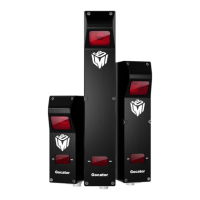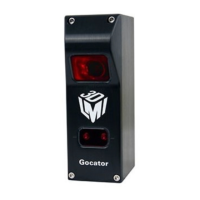Gocator Line Profile Sensors: User Manual
450
Gocator Acceleration
Gocator sensors are all-in-one devices, combining scanning, measurement, and control capabilities in a
single housing. However, to achieve higher scan rates and measurement performance in very high
density data scenarios, you may wish to use one of two acceleration methods.
Gocator acceleration improves a Gocator system's processing capability by transferring the processing
to a dedicated processing device in the system. The accelerator can accelerate one or more standalone
sensors or multi-sensor systems. LMI provides two acceleration solutions:
l A hardware Smart Vision Accelerator called GoMax
l PC-based acceleration software (available either as a standalone utility or via the Gocator SDK)
For estimated performance and scan rates, see Estimated Performance on page 455.
The Gocator emulator and accelerator do not support the PROFINETprotocol.
The web interface of an accelerated sensor is identical to the interface of an unaccelerated sensor. The
Ethernet-based output protocols (Gocator, EtherNet/IP, ASCII, and Modbus) are also identical to those
found on an unaccelerated sensor, and are fully supported.
Gocator accelerators support digital, analog, and serial output from sensors. However, because
output must be passed to the accelerator and then back to the sensor, network latency will have
an impact on performance.
When a sensor is accelerated, it sends data directly to the accelerating device. You access the Gocator
web interface using the IP address of the accelerating device, rather than the IPof the sensor. SDK
